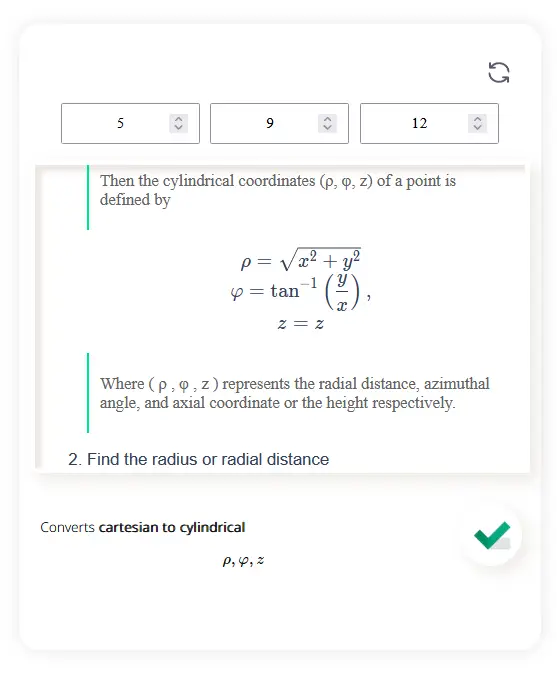Converts cartesian to cylindrical\[ρ, φ, z\]

Cartesian coordinates are a coordinate system used to describe the position of a point in a two-dimensional or three-dimensional space. They utilize orthogonal axes (x, y, and sometimes z) to measure the distance from the origin (usually denoted as O) to the point in terms of its horizontal (x) and vertical (y) components.
The x-axis is typically horizontal, the y-axis is vertical, and the z-axis is perpendicular to both. Each coordinate in the system represents a displacement along the respective axis. Using Cartesian coordinates, we can easily locate points and measure distances in space.
To convert Cartesian coordinates (x, y, z) to spherical coordinates (r, θ, φ), use the following formulas:
r = sqrt(x^2 + y^2 + z^2)
θ = arccos(z / r)
φ = atan2(y, x)
1. Determine the radial distance (ρ) using the x and y coordinates:
ρ = sqrt(x^2 + y^2)
2. Determine the azimuthal angle (θ) using the x and y coordinates:
θ = arctan(y / x)
3. Keep the z coordinate as is:
z = z
So, the conversion formulas for Cartesian coordinates to cylindrical coordinates are:
ρ = sqrt(x^2 + y^2)
θ = arctan(y / x)
z = z
It's important to note that the ranges of the coordinates vary depending on the specific system used. In the case of cylindrical coordinates, ρ is typically non-negative (ρ ≥ 0), θ is measured in the range of 0 to 2π radians, and z has no restrictions.
